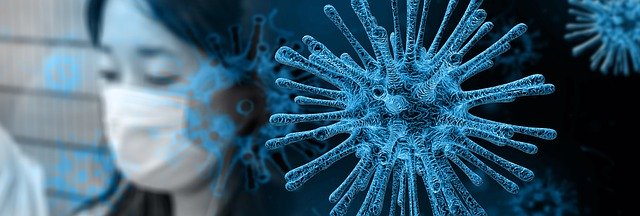On March 11, 2020, the WHO officially declared the coronavirus a global pandemic. Although the fatality rate of this coronavirus is much lower than that of previous SARS viruses and Ebola viruses, the current coronavirus has spread to more countries or regions in a shorter period of time. Many people.
Like many other outbreaks, coronavirus faces serious challenges such as identifying the source of the virus, reducing its spread, and having sufficient medical resources to treat all patients with severe symptoms.


The Pain Points of the Viral Pandemic
The rapid spread of the coronavirus has exacerbated many structural problems in government health response systems, all of which illustrate the difficulty of implementing immediate and effective solutions given the scale of the virus outbreak.
Tracing the source of a viral outbreak, isolating potentially infected patients, treating seriously ill patients, and preventing cross-infection between medical staff and patients all require significant human resources, and the accelerated spread of the epidemic will further strain the entire system.
Can IoT provide solutions that are easily scalable and automated?
Qu'est-ce que l'internet des objets ?
IoT is a scalable automation solution that is already widely used in other industries such as automated manufacturing, wearable consumer electronics, and asset management.
The Internet of Things consists of several functional components: data collection, transmission, analysis and storage. Data is collected by sensors installed on terminal hardware (e.g., robots, health monitors). The data is then sent to a central cloud server for analysis and decision-making, for example, if the machine requires proactive maintenance to prevent unexpected failure, or if the patient requires further examine.
Current status of IoT applications in coronavirus
Currently, IoT is already being used in some aspects of managing the coronavirus. For example, drones are already being used for public surveillance to ensure quarantine and mask wearing. Artificial intelligence is also being used to predict future outbreak areas.
Using the Internet of Things to analyze epidemics
As mobile devices collect ever-increasing data sets, IoT can have more applications during viral epidemics.
IoT can be used to trace the source of disease outbreaks. A recent study by researchers at the Massachusetts Institute of Technology (MIT) used aggregated cellphone data to track the spread of the 2013 and 2014 coronavirus dengue viruses in Singapore in minute detail over short distances and time periods. So overlaying a geographic information system (GIS) on IoT mobile data from infected patients can do two things. Upstream, it can help epidemiologists find patient zero; downstream, it can help identify all people who have come into contact with an infected patient.
Using IoT to ensure compliant isolation
IoT can also be used to ensure patient compliance once a potentially infected person enters quarantine. Public health staff can monitor which patients remain in isolation and which patients violate isolation policies. IoT data will also help them track who they may have infected due to violating quarantine policies.
Using IoT to manage patient care
The scalability of IoT can also help monitor all high-risk patients who require isolation but are not ill enough to require hospitalization. Today, daily check-ups of patients are done manually by medical staff who go door-to-door. In one reported example, a health care worker asked patients to stand on the balcony of their apartment so their temperatures could be measured using a drone infrared thermometer. Through the Internet of Things, patients can measure their own body temperature and upload the data to the cloud via their mobile device for analysis. In this way, medical staff can not only collect more data in less time, but also reduce the chance of cross-infection with patients.
Additionally, IoT can reduce the burden on hospital staff. IoT is already being used to remotely monitor home-based patients with chronic diseases such as hypertension or diabetes. In hospitals, telemetry has transmitted biometric data such as heartbeat and blood pressure from wearable wireless devices on patients to central monitors, allowing monitoring of large numbers of patients with minimal human effort. In this case, IoT can be used to reduce the workload of medical staff and increase their efficiency, while reducing the risk of infection for medical staff.
Résumer
The underlying technologies and IoT components that can be used to enable healthcare systems to respond to disease outbreaks already exist; however, they are fragmented and not yet connected. Therefore, the system needs to be able to quickly build its infrastructure and connect various components such as data collection, processing, and storage, so that the system can expand in aspects such as disease tracking, preventive isolation, and hospitalization of infected people.
